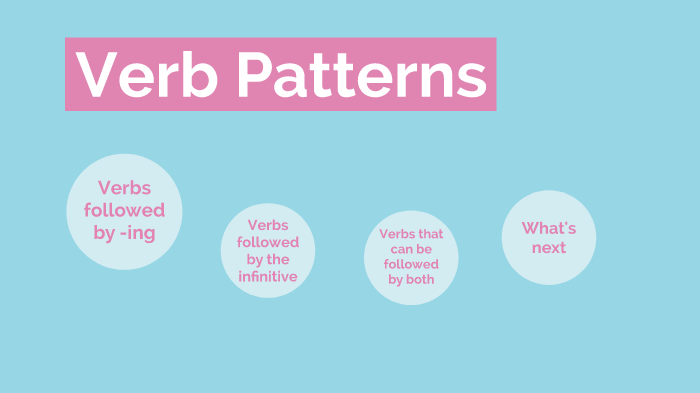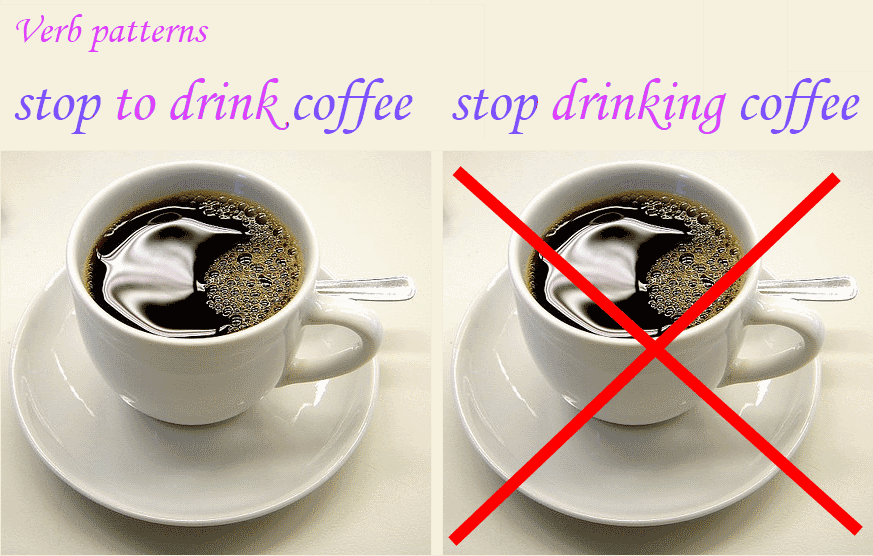Khi luyện thi IELTS Grammar, chúng ta không thể bỏ qua chủ đề ĐỘNG TỪ + CÁC MẪU ĐỘNG TỪ. Để biết CÁC MẪU ĐỘNG TỪ (to-V; -ing; preposition + -ing; V without to) đề cập đến những gì sau một động từ thì chúng ta hãy cùng tìm hiểu bài viết dưới đây thôi!

- Khi bạn sử dụng hai động từ cùng nhau, hình thức của động từ thứ hai phụ thuộc vào động từ thứ nhất. Động từ thứ hai có thể là to-V, V không to hoặc -ing.
► NOTE: Nhiều động từ cũng có thể được theo sau bởi mệnh đề that (ví dụ: recommend, suggest, tell)
1. V + to-V
- Một số động từ được theo sau trực tiếp bởi to-V và không cần tân ngữ:
| agree | aim | appear | arrange | attempt | be able | be likely |
| claim | descide | deserve | fail | hope | learn | manage |
| offer | plan | promise | refuse | seem | tend | try |
ex1: Was animal care something you always hoped to do?
ex2: I decided to do an animal management course during my last year at school.
- Một số động từ luôn được theo sau bởi một tân ngữ (O) + to-V:
| advise | allow | encourage | force | get |
| persuade | remind | teach | tell | warn |
ex1: This course has taught me to respect all animals and overcome my fears. (not This course has taught to respect all animals)
ex2: I just told him to be quiet.
- Get được sử dụng với một tân ngữ (O) + to-V khi nó có nghĩa là thuyết phục (persuade) hoặc làm, thực hiện (make):
ex: If you want to get your teachers to notice your work you should make sure you hand it in on time.
- Một số động từ có thể được sử dụng có hoặc không có tân ngữ (O) + to-V:
| ask | choose | dare | expect | help |
| intend | need | prefer | prepare | want |
ex1: I didn't want to touch the snakes.
ex2: They wanted us to touch the snakes.
2. V (+ GIỚI TỪ) + -ing
- Một số động từ được theo sau bởi -ing:
| avoid | approve of | can't help | can't stand | carry on | consider | deny | don't mind | enjoy |
| feel like | finish | give up | imagine | include | insist on | involve | keep | mention |
| mind | practise | put off | recommend | resist | suggest | think of / about |
ex1: I prefer dealing with the customers but I don't mind cleaning out the animals and feeding them.
ex2: We have practised handling animals.
- Khi một động từ được theo sau bởi một giới từ (NGOẠI TRỪ to) thì động từ theo sau luôn luôn là -ing:
ex: I was thinking about doing another course.

3. V + to-V hoặc -ing
- Một số động từ được theo sau bởi to-V hoặc -ing với rất ít sự khác biệt về ý nghĩa:
| attempt | begin | bother | continue | hate |
| like | love | prefer | start |
ex1: I have started working at a pet shop. (= I have started to work at a pet shop.)
ex2: I like feeding the animals. (= I like to feed the animals.)
► NOTE: Would like / would love / would prefer được theo sau bởi to-V:
ex1: I would really like to work in either a zoo or a safari park.
ex2: I would prefer to stop studying for a while.
- Một số động từ đôi khi có nghĩa khác khi chúng được theo sau bởi to-V hoặc -ing.
| forget | go on | need | remember | stop | try |

| V | + to-V | + -ing |
| go on |
- Một hành động theo sau một hành động khác: ex: After university she went on to get a job as a vet. (= she finished university and then she got a job as a vet) |
- Một hành động được lặp đi lặp lại hoặc được tiếp tục: ex: She went on talking even though the film had started. (= she continued talking) |
| remember |
- Bạn nhớ trước khi thực hiện hành động (Nhớ phải làm gì): ex: As long as you remember to do what you've been told, it's fine. (= 1 remember 2 do what you've been told) |
- Bạn nhớ sau khi thực hiện hành động (Nhớ đã làm gì): ex: I remember feeling really scared. (= 1 I felt scared 2 I remembered that feeling) |
| forget |
- Hành động đã không xảy ra (Quên phải làm gì): ex: I forgot to post my application form. (= I didn't post it) |
- Hành động đã xảy ra (Quên đã làm gì): ex: I will never forget meeting you that cold winter's day. (= we did meet) → Hình thức này thường ở câu phủ định. |
| stop |
- Có hai hành động và hành động đầu tiên ngừng lại để hành động thứ hai có thể bắt đầu (Dừng để làm gì): ex: I stopped to ask the way. (= I stopped and then I asked) |
- Có một hành động dừng lại (Dừng hẳn làm gì): ex: I'm going to stop studying for a while. |
| try |
- Nỗ lực để làm một cái gì đó. Bạn có thể không luôn luôn thành công (Cố gắng làm gì): ex: I try to find out why he's barking. |
- Thử nghiệm làm một cái gì đó (Thử làm gì): ex: She tried adding a bit more sugar but it still tasted horrible. |
| need |
- Chủ ngữ của câu sẽ thực hiện hành động: ex: I need to mend my jeans. (= I will mend them) |
- Mang nghĩa bị động: ex: My jeans need mending. (= we don't know who will mend them) |
4. V + O + V without to
| feel | hear | help | let | make | notice | see | watch |
- Make và let luôn được theo sau bởi một tân ngữ (O) + V without to:
ex1: They made us handle all kinds of animals including spiders and snakes.
ex2: They let us take it slowly.
► NOTE:
- Khi make được sử dụng trong câu bị động, chúng ta sử dụng to-V:
ex: I was made to handle all kinds of animals including spiders and snakes.
- Help có thể được theo sau bởi một V hoặc V without to:
ex: The course helped me understand my own dog better. (= The course helped me to understand my own dog better.)
5. DẠNG PHỦ ĐỊNH
- Nếu chúng ta muốn làm cho động từ thứ hai ở dạng phủ định, chúng ta sử dụng not:
ex1: I chose not to study at this college.
ex2: I enjoy not working late.








